Climate Ready Scotland: climate change adaptation programme 2019-2024
A five year programme to prepare Scotland for the challenges we will face as our climate continues to change.
Outcome 3: Our inclusive and sustainable economy is flexible, adaptable and responsive to the changing climate

Image 3.1. Ariundle Oakwood National Nature Reserve (© Lorne Gill, SNH)
Introduction
Scotland’s businesses have made great strides in the transition to a low carbon future. Scotland’s climate is already changing, bringing new challenges and opportunities for Scottish businesses.
Scotland’s nature-based industries will be the most directly impacted, for example: increased rainfall could lead to flooding of Scottish farms and damage to crops, changes in temperature of Scotland’s seas may impact Scotland’s fisheries, and Scotland’s forests may face new pests and diseases.
Scotland’s businesses based on manufacturing, services, and other industries may have other challenges including disruption to supply chains, difficult travelling conditions for staff and water shortages for industrial processes. However, climate change may also offer opportunities for Scottish businesses including the development of products and services for climate change adaptation as well as improved productivity in the forestry and agriculture sectors.
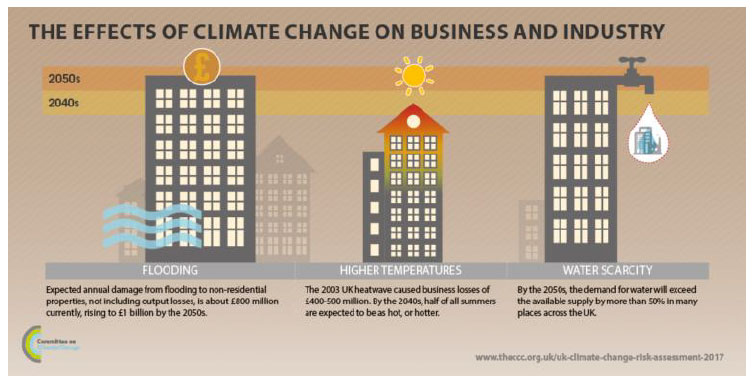
Image 3.2. The effects of climate change on business and industry (© The CCC)
Where We Are Now
Over the last five years, Adaptation Scotland has worked with Scottish businesses to increase their awareness of climate change and help them adapt.
The following diagram outlines the structure of the Economy chapter. It is divided into three Sub-Outcomes and sets out the policies that contribute towards this Outcome. The Sub-Outcomes reflect the different challenges faced by Scotland’s natural resource based businesses and the manufacturing, services, and other businesses. The final Sub-Outcome relates to the ability of businesses to harness the opportunities created as a result of climate change.
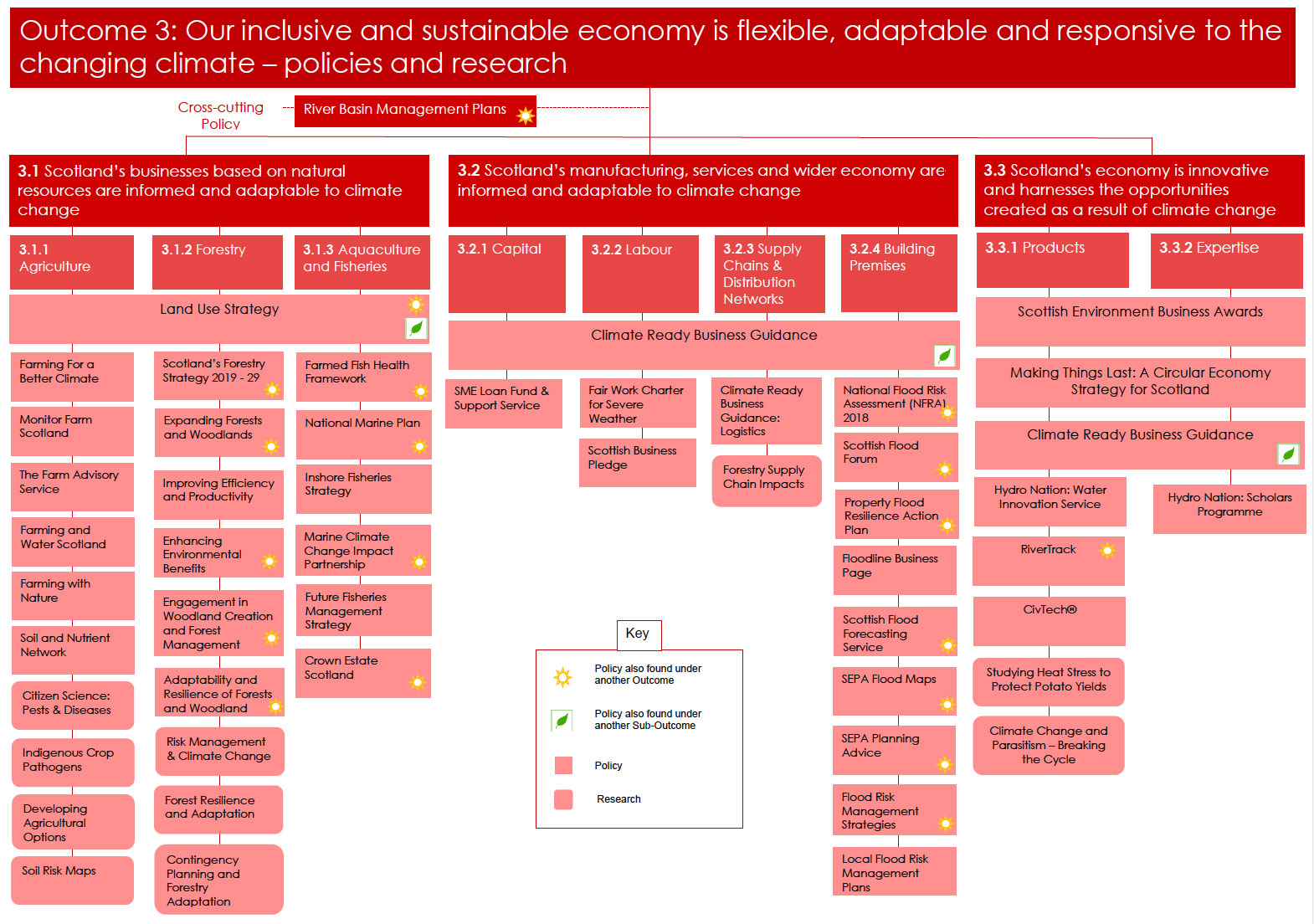
Cross-Cutting Policies
The following policy supports all businesses to adapt to the changing climate.
| River Basin Management Plans |
|---|
| River Basin Management Plans detail Scotland’s route map for protecting and improving the water environment. Careful management and future planning of watercourses will benefit businesses by helping them avoid disruption that could be caused by water scarcity or flooding events. More detail on these plans are included in Section 5.1.1. |
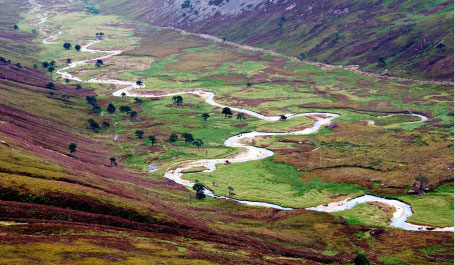
Image 3.3. River Derry (© Lorne Gill, SNH)
Sub-Outcome 3.1: Scotland’s businesses based on natural resources are informed and adaptable to climate change
Communities across Scotland benefit from the goods and services that our natural environment provides, including food and drink, renewable energy, water purification, flood mitigation and places for recreation, education and inspiration. Scotland’s businesses based on natural resources, such as agriculture, forestry and fishing, form an important part of Scotland’s identity, economy and national heritage.
Cross-Cutting Policies
The following policy supports both the forestry and agricultural industries adapt to the changing climate.
| Land Use Strategy |
|
|---|---|
| The Strategy will encourage the development of place-based partnerships for delivering integrated and sustainable land use at a local, catchment or landscape scale. It will be particularly applicable in the uplands. Climate change adaptation is one of the objectives of the Land Use Strategy. Integrated land use is important in increasing the resilience of the natural environment and promoting adaptive management as well as delivering continued benefits for people. |
|
| Timelines: Ongoing |
Owners: Scottish Government |
3.1.1 Agriculture
Agriculture is uniquely placed within the climate change context. It supports the decarbonisation of our energy system through the production of renewable energy and helps to increase our national carbon sink through the trees, hedgerows and soils on our farms and crofts. However, it is a significant contributor to climate change, totalling around a quarter of Scotland’s overall emissions. Agriculture is also one of the sectors most at risk from climate change. Increasing temperatures due to climate change could also result in longer growing seasons for crops, which has been backed up by anecdotal evidence provided during our stakeholder engagement sessions.
Climate change adaptation will play a key role in the future of rural policy. Working with external stakeholders from both the agricultural industry and environmental bodies, we are currently looking to design and develop potential agricultural policy, which will increase the adaptive capacity of farmers as well as reducing greenhouse gas emissions and increasing carbon sequestration within agriculture.
The policies outlined below can help Scotland’s farmers, crofters and land managers adapt to a changing climate whilst ensuring a secure food production system for future generations.
| Farming For a Better Climate |
|
|---|---|
| The Farming for a Better Climate programme works with farmers to find practical ways to move towards a sustainable, profitable, low carbon future, adapting to a changing climate and securing farm viability for future generations. |
|
| Timeline: 2019 - 2021 |
Owners: SAC Consulting on behalf of Scottish Government |
| Monitor Farm Scotland |
|
|---|---|
| Monitor Farm Scotland[6] takes a whole farm approach working with Scottish farmers, crofters and land managers to improve profitability, productivity and sustainability within the agricultural industry. This is delivered through a series of practical demonstrations and through the sharing of best practice information through on farm events. |
|
| Timeline: Ongoing |
Owners: Delivered jointly by Quality Meat Scotland (QMS) and AHDB Cereals & Oilseeds |
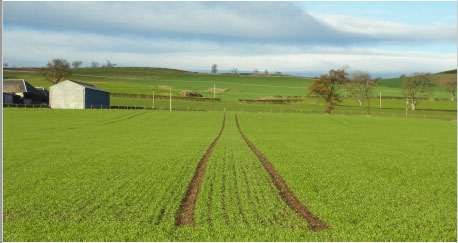
Image 3.4. Spring Barley
| The Farm Advisory Service |
|
|---|---|
| Farm Advisory Service[7] provides a one stop shop for farmers, crofters and land managers. Providing high-quality advice and information on climate change adaptation and mitigation is a core objective of the service. The service offers a range of practical guides on farm practices that can help adapt to a changing climate, such as identifying and relieving soil compaction, the use of cover crops to prevent soil loss, water management and nutrient planning and use. |
|
| Timeline: 2016 - 2020 |
Owners: Scottish Government delivered by SAC Consulting and Ricardo |
| Farming and Water Scotland |
|
|---|---|
| Farming and Water Scotland[8] is predominantly aimed at helping farmers, crofters and land managers understand the rules, risks and opportunities regarding diffuse pollution. By providing advice and information on actions that can help to maintain quality as well as to manage its use better, Farming and Water Scotland plays a vital role in improving farm and croft climate change adaptive capacity. |
|
| Timeline: 2016 - 2020 |
Owners: SAC Consulting |
| Farming with Nature |
|
|---|---|
| The Farming with Nature programme is a knowledge transfer and innovation programme aimed at Scottish farmers, crofters and land managers that are considering or currently working systems that embrace organic, agro-ecological or High Nature Value production methods. The broad themes covered by the programme include grassland management, animal health and welfare and woodland creation with a focus on best practice. Farming with Nature also looks to promote other evidenced practices that are newer to Scotland such as agro-forestry and mob grazing which can help farms adapt to a changing climate. |
|
| Timeline: 2016 - 2019 |
Owners: Soil Association |
| Soil and Nutrient Network |
|
|---|---|
| Soil and Nutrient Network has established a group of Scottish farms to take part in a ‘before and after’ project to looking at how to protect and improve Scottish farm soils. Our soils are the cornerstone to a sustainable and productive agricultural industry and its ability to continue to produce food for future generations. The Soil And Nutrient Network farms demonstrate how to make best use of both organic and inorganic fertilisers, the benefits of good pH levels and the importance of good soil structure as we look to help our farmers, crofters and land mangers adapt to a changing climate. |
|
| Timeline: 2016 - 2020 |
Owners: Scottish Government delivered by SAC Consulting |
Citizen Science: How to Investigate Pests and Diseases Under Climate Change
Climate change is expected to lead to warmer and wetter climates that could increase the number of, and damage caused by, pests and diseases in agriculture, horticulture and forestry. It is therefore vital that we improve our understanding of these potential biological threats, in order to develop strategies to adapt. To help, we have created a state-of-the-art, and free to download, desktop app to provide climate change risk assessments for crops pests and diseases in the UK that anyone can use.
Research
Indigenous Crop Pathogens and Climate Change
Indigenous pathogens of crops are being investigated to determine their spread and survival under different climate change scenarios. For example, field trial sites are being used to assess the influence of climate on Ramularia development in cereals in order to inform and develop risk prediction models to aid treatment decisions. Modelling has also allowed predictions about the future influence of non-indigenous Pectobacterium species on blackleg disease of potato in Scotland, and the risk of viable P. infestans spore dispersal amongst crops in future climate scenarios to provide a disease risk platform for informing integrated pest management (IPM).
Research
Developing Agricultural Options in a Changing Climate
Spring barley yield maps for Scotland for the period (1995-2015) have been completed. The maps show unique combinations of climate and soils across all areas in which spring barley has been grown historically, and for adjacent areas, to assess the potential for new areas to be exploited under climate change.
Research
Soils Risk Maps
A series of soil risk maps for much of the cultivated land in Scotland have been developed to help farmers identify areas vulnerable to erosion, compaction, leaching and runoff. These maps integrate work funded by CREW, Underpinning Capacity and the SRP, and are aimed at improving water quality by reducing diffuse pollution from land-based activities. SEPA, Scottish Water and SNH have asked to be provided with these maps and they will also be accessible via Scotland’s Soils for use by land managers.
Research
3.1.2 Forestry
Forestry contributes £1 billion per year to the Scottish economy and supports more than 25,000 jobs. Scottish Ministers are committed to delivering economic, social and environmental benefits through forestry in Scotland. Forest managers need to factor the changing climate into the way that they manage forests. Projections suggest that forests will be subject to a growing risk of damage due to anticipated increases in extreme events such as storms, wildfire, heavy rainfall or droughts. The changing climate, coupled with greater globalisation of trade and travel, is also likely to increase the threat to trees from pests and diseases. The forestry sector’s response to the likelihood of climatic change is complicated by the long timescales involved in forest management.
Forests and trees can help non-forestry businesses adapt to climate change by, for example, providing shelter for livestock, shading for buildings in urban areas, and natural flood management.
| Scotland’s Forestry Strategy 2019-2029 |
|
|---|---|
| Scotland’s Forestry Strategy presents the Scottish Government’s 50-year vision for Scotland’s forests and woodlands and sets out a 10-year framework for action. It has the principles of sustainable forest management at its core and recognises the need for better integration of forestry with other land uses and businesses, reinforcing the principle of ‘the right tree, in the right place, for the right purpose’. The Strategy supports the delivery of existing forestry commitments, such as the woodland creation and wood product use in construction targets expressed in the Climate Change Plan, and the native woodland and protected sites targets expressed in Scotland’s Biodiversity: A Route Map to 2020. It aims to:
|
|
| Timelines: An implementation plan for the Forestry Strategy will be published by April 2020 |
Owners: Scottish Government (Scottish Forestry) |
| Forestry Strategy: Expanding Forests and Woodlands |
|
|---|---|
| Scotland’s Forestry Strategy 2019-2029 identified six priority areas for action over the following ten years. These priority areas form the framework for co-ordination of Government and partnership working. One of the priority actions identified was: ‘Expanding the area of forests and woodlands, recognising wider land-use objectives’. This priority will help deliver the forestry targets set out in the Climate Change Plan to increase woodland cover to 21% of the total area of Scotland by 2032, using a stepped increase in woodland creation to 15,000 hectares by 2024-25. These new forests and woodlands will be of different types and scales, for a range of purposes. Thus, while they will help to grow Scotland’s carbon sink and reduce greenhouse gas emissions, some will also help businesses to adapt to a changing climate, for example, by providing shading and shelter for livestock or urban buildings, or for natural flood management. In the last year, Scotland’s tree planting targets were surpassed. In total, more than 11,200 hectares of new planting was undertaken, which exceeded the current 10,000 hectare annual target. |
|
| Timeline: An implementation plan for the Forestry Strategy will be published by April 2020 |
Owners: Scottish Government (Scottish Forestry) |
| Forestry Strategy: Improving Efficiency and Productivity |
|
|---|---|
| ‘Improving efficiency and productivity, and developing markets’ is a priority within Scotland’s Forestry Strategy 2019-2029. This will be achieved by encouraging and supporting innovation, research and development, and the adoption of new technologies and practices, including those which help the sector to adapt to climate change. It will also be achieved by attracting new and more diverse talent to the forestry sector and improving the capacity and capabilities of the existing workforce to ensure the forestry sector has the skills with which to improve resilience and adapt to a changing climate. |
|
| Timeline: An implementation plan for the Forestry Strategy will be published by April 2020 |
Owners: Scottish Government (Scottish Forestry) |
| Forestry Strategy: Enhancing Environmental Benefits |
|
|---|---|
| One of the priority actions identified for Scotland’s Forestry Strategy 2019-2029 was: ‘Enhancing the environmental benefits provided by forests and woodlands’. This will be achieved, in part, by supporting the management of forests and woodlands to provide natural flood management and shade and shelter for livestock, which will have economic benefits for farmers, improving their productivity. |
|
| Timeline: An implementation plan for the Forestry Strategy will be published by April 2020 |
Owners: Scottish Government (Scottish Forestry) |
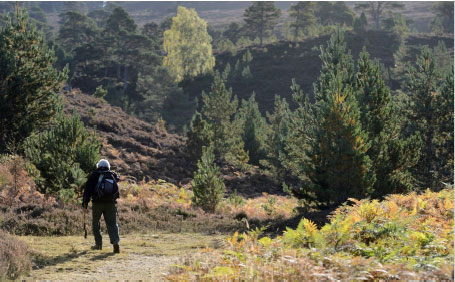
Image 3.5. Invereshie and Inshriach National Nature Reserve (© Lorne Gill, SNH)
| Forestry Strategy: Engagement in Woodland Creation and Forest Management |
|
|---|---|
| Scotland’s Forestry Strategy 2019-2029 identified six priority areas for action over the following ten years. These priority areas form the framework for co-ordination of Government and partnership working. One of the priority actions identified was: ‘Engaging more people, communities and businesses in the creation, management and use of forests and woodlands’. Alongside other benefits, this means ensuring that more people gain economically from Scotland’s forests and woodlands. This includes a focus on achieving better integration between forestry and other land-based businesses (in particular crofting, farming and estate management). This will be, in part, achieved by improving people’s understanding of the practice and value of forestry, and the wider benefits it provides such as supporting climate change adaptation through natural flood management and provision of livestock shade and shelter. |
|
| Timeline: An implementation plan for the Forestry Strategy will be published by April 2020 |
Owners: Scottish Government (Scottish Forestry) |
| Forestry Strategy: Adaptability and Resilience of Forests and Woodlands |
|
|---|---|
| ‘Increasing the adaptability and resilience of forests and woodlands’ is a priority within Scotland’s Forestry Strategy 2019-2029. We must safeguard the ability of Scotland’s forests and woodlands to provide a wide range of benefits (including economic) to current and future generations. Improvements to the adaptability and resilience of Scotland’s forest and woodlands in the face of a changing climate will be achieved by:
|
|
| Timeline: An implementation plan for the Forestry Strategy will be published by April 2020 |
Owners: Scottish Government (Scottish Forestry) |
Lessons on Risk Management from the Finance Sector for Climate Change Adaptation in Scotland’s Forestry Sector
Climate related risks must be planned for and managed to ensure that Scotland’s forestry sector is well-adapted and continues to support a resilient natural environment and a robust economy. The finance sector (banking, insurance, investment) arguably leads the way in defining and managing risk and has gone through a number of challenges. Therefore, there is scope and interest in learning and applying lessons on risk management from this sector to other sectors. This report identifies the approaches adopted in the finance sector that are applicable to improving risk measurement and management in the forestry sector.
Research
Forest Resilience and Adaptation
A range of research projects are underway that aim to improve understanding of the impacts of climate change on forests and forestry, and of how forestry can adapt to reduce these impacts and benefit from any opportunities. This includes work to:
- assess and evaluate forest resilience, developing tools to assess resilience across the range of functions of forests and woodlands in relation to climate change and policy and operational decisions,
- examine alternative adaptation strategies to build resilience to climatic risks, developing adaptation demonstration areas, guidance and case studies,
- inform the management and future proofing of forests in the light of increased threats from pest and pathogens.
Research
The Role of Contingency Planning in Climate Change Adaptation in the Forestry Sector in Scotland
Contingency plans have the potential to increase adaptive capacity by enabling more rapid and efficient response to climate change risks events. As such, contingency plans provide economic benefits to forestry businesses, minimise the disruption to the natural environment, and support Scotland’s forests in continuing to deliver the widest range of ecosystem services. This report considers when contingency plans are necessary, and explores which climate risks to the forest sector in Scotland may benefit from national or regional contingency plans.
Research
3.1.3 Aquaculture and Fisheries
Aquaculture is an increasingly important industry for Scotland, helping to sustain economic growth in the rural and coastal communities of the north and west. Involving the farming or culturing of fish, molluscs, crustaceans and seaweed, aquaculture produces our most valuable food export, Scottish salmon.
The global human population has been projected to reach over 9 billion people by 2050, and over 10 billion people by 2100. Feeding a future population of 9-10 billion people represents a significant challenge, particularly in light of the global climate emergency. Seafood is an important source of healthy protein and any increase in production to feed a growing population must come from aquaculture, in addition to the continued sustainable fisheries management.
In comparison to other animal proteins, salmon farming is one of the most eco-efficient and sustainable forms of protein available. It has the lowest carbon footprint, highest protein retention, lowest use of scarce freshwater and best feed conversation ratio of any of the major animal foods. Shellfish and seaweed also have their part to play in producing healthy seafood in low impact production systems. There may be benefits of farming shellfish and seaweed in terms of climate change and their potential role in carbon storage, although further research is required.
Global marine ecosystems are being affected by climate change (warming of the sea) and ocean acidification. Unless it is able to adapt to climate change, Scotland’s aquaculture industry may be adversely impacted. Changes will present both threats and opportunities for Scottish aquaculture producers.
Scotland is also among the largest sea fishing nations in Europe. Changes to the distribution and depth of fish as a result of climate change have already been recorded and are predicted to continue. Cold water species are moving further north, and deeper in the oceans, and warm water species are extending their range north with knock-on effects for Scotland’s fishing industry.
It is essential that our aquaculture and fisheries are able to adapt to climate change, in order to feed a growing global population with sustainably produced or sourced seafood. The following policies will support Scotland’s aquaculture and fishing industry adapt to the changing climate.
| Farmed Fish Health Framework: Climate Change and Ocean Acidification Subgroup |
|
|---|---|
| The Climate Change and Ocean Acidification subgroup of Scotland’s Farmed Fish Health Framework, plays an integral part in shaping the future climate change adaptation strategy of the aquaculture sector. The subgroup aims to support aquaculture business to adapt by monitoring, reviewing and assessing the impact of climate change and ocean acidification on Scottish waters. The group is considering its role in addressing the global climate emergency and what climate change will mean for Scottish aquaculture producers. |
|
| Timeline: 2018-2028 |
Owners: Marine Scotland, Industry stakeholders |
| National Marine Plan (2015) |
|---|
| The National Marine Plan considers climate change. It highlights that fisheries will be managed taking into account changes in species distribution and abundance due to climate change. More information on this plan can be found in Chapter 6 under Cross-Cutting policies. |
| Inshore Fisheries Strategy |
|
|---|---|
| Climate change will put additional pressure on marine species and make it more difficult to maintain fisheries. Sustainably managed fisheries can help marine species adapt to the changing climate by reducing other pressures. The 2015 Inshore Fisheries Strategy sets out a vision to support the development of a more sustainable, profitable and well-managed inshore fisheries sector in Scotland. The Strategy focuses on:
|
|
| Timelines: Ongoing |
Owners: Marine Scotland |
| Marine Climate Change Impacts Partnership (MCCIP) |
|---|
| The Scottish Government contributes funds to the MCCIP which collates expertise from across the UK to present data on climate change impacts in the marine environment. The MCCIP have published Report Cards on climate change and the UK marine leisure industry and produced an assessment of climate change adaptation in UK seafood. More details on this policy can be found under Section 6.2.3. |
| Future Fisheries Management Strategy |
|
|---|---|
| The Scottish Government is undertaking a discussion with stakeholders to help inform and develop Scotland’s Future Fisheries Management Strategy. In partnership with stakeholders, we want to develop a range of ideas and proposals to help deliver a future management structure which will firmly establish Scotland’s place as a world leader in responsible and sustainable fisheries management. The new Strategy will contribute to sustainable and responsible fishing levels and practices. It will take an ecosystem based approach to fisheries management and consider the environmental impact of our future policies and programmes. |
|
| Timeline: A discussion paper was published on 4 March 2019 |
Owners: Marine Scotland |
| Crown Estate Scotland |
|---|
| In 2017, decision-making powers over a collection of rights, functions and assets owned by the Crown were devolved to Crown Estate Scotland. Marine Scotland will work with Crown Estate Scotland to ensure continued commitment to investments to contribute to climate change adaptation and facilitate wider societal adaptation. More information can be found in Section 6.2.3. |
Sub-Outcome 3.2: Scotland’s manufacturing, services and wider economy are informed and adaptable to climate change
The changing climate will affect how Scottish businesses are able to work and function. This Sub-Outcome considers the impact of the changing climate through four key business functions which are applicable across different types of businesses.
Scottish businesses could be affected by issues including flooding, supply chain disruption and reduced employee productivity due to higher temperatures. Businesses and industries operating in the coastal zone may also face the loss of premises and infrastructure due to sea level rise and coastal erosion. Scottish businesses will need to adapt their business practices to respond to these challenges.
Cross-Cutting Policies
| Climate Ready Business Guidance |
|
|---|---|
| Adaptation Scotland support businesses to build knowledge, confidence and awareness about adaptation; and to work together to adapt. Adaptation Scotland’s Climate Ready Business Guide is targeted at small and medium sized enterprises and lays out six key business areas for considering climate impacts, threats and opportunities. |
|
| Timeline: Ongoing |
Owners: Adaptation Scotland |
3.2.1 Capital
The changing climate could impact businesses ability to access capital. Availability and affordability of insurance cover can be affected by rising risk levels, which in turn would also have implications for business access to capital. Credit may become more expensive for companies who are considered to be taking insufficient action to adapt to climate change. A business’s ability to adapt may also be limited by the availability of affordable loans to finance adaptation measures. Business and financial regulation are UK Government reserved matters, however, the following policy helps support businesses to continue to access capital as the climate changes.
| SME Loan Fund and Resource Efficient Scotland SME Support Service |
|
|---|---|
| The Scottish Government is committed to supporting small and medium sized Scottish businesses to reduce their energy consumption and resource costs and to encourage the uptake of renewable technologies where appropriate. The resultant savings in operating costs, energy consumption and improvements to building fabric and upgraded energy systems not only improves business efficiency but can make businesses more competitive and resilient to the changing climate. |
|
| Timeline: SME Loan funding is ongoing and subject to Ministerial budget approval on an annual basis. |
Owners: Scottish Government |
3.2.2 Labour
The changing climate is likely to have direct impacts on employee productivity. Workers engaged in particular sectors or occupations, such as builders, farmers and factory workers, who are involved in manual labour, may be at greatest risk of heat stress. Other sectors may also be impacted if their work places are not able to manage higher temperatures. Extreme weather can also impact productivity if workers are unable to travel to their work place or have to take leave to deal with extreme weather related problems at home. The following policies will support businesses to adapt their labour practices as the climate changes.
| Fair Work Charter for Severe Weather |
|
|---|---|
| We have developed a Fair Work Charter for Severe Weather in conjunction with the Scottish Trades Union Congress (STUC) to support employers to plan for and manage the impacts of severe weather conditions on workers and their business. The Charter also encourages employers to make appropriate allowances for those workers with specific accessible travel needs or caring responsibilities e.g. the impact on parents of school closures. Employers should encourage flexible working practices to enable those who can, to work from home. |
|
| Timeline: Ongoing |
Owners: Scottish Government |
| Scottish Business Pledge |
|
|---|---|
| The Scottish Business Pledge (SBP) brings together inclusive, fair work and business practices to drive productivity and competitiveness; it offers a way for business to understand what this means for them. SBP is positioned in Scotland’s Economic Strategy as one of the Scottish Government’s key policy initiatives, focusing on delivery of inclusive growth through fair work, innovation and internationalisation. We have refreshed and are taking forward implementation of the restructured SBP. Part of this will involve development of a new element focusing on the environment. This will encourage businesses to consider the range of measures they could adopt to improve their own efficiency while supporting climate change mitigation and adaptation aims. |
|
| Timeline: 2019-2020 |
Owners: Scottish Government |
3.2.3 Supply Chains and Distribution Networks
| Climate Ready Business Guidance: Logistics |
|
|---|---|
| Adaptation Scotland’s Climate Ready Business Guidance provides guidance on how business can ensure their supply chains are adaptable to the changing climate. |
|
| Timeline: Ongoing |
Owners: Adaptation Scotland |
Adverse weather conditions are one of the most cited reasons for disruption to a business’s supply chains and distribution network. As the climate changes extreme weather could cause increased disruption to supply chains.
Climate Change Impacts on Scotland’s Forestry Supply Chain
Scotland’s forestry supply chain has numerous stages, from nurseries, forest management, and timber harvesting, through to transport and processing. This report sets out a theoretical overview of climate change impacts on Scotland’s forestry supply chain, and potential consequences of adaptation practices implemented in response, with a focus on forest wood products. It looks at impacts on the natural environment including forests, but also on infrastructure such as energy, water, transport and communication, and on business operations.
Research
3.2.4 Building Premises
As the climate changes some businesses may face an increased risk of flooding. Business location, maintenance and management will determine their ability to adapt to climate change. Flooding of business premises is considered in the Communities Chapter. The location of business premises may impact on the availability of water with some water catchment areas in the UK projected to have supply-demand deficits. Water scarcity may become a problem for some businesses, especially water intense industries such as those producing chemical products, paper products and food and drink. The resilience of Scotland’s water supply is considered in the Supporting Systems Chapter.
| National Flood Risk Assessment (NFRA) 2018 |
|---|
| The revised NFRA also includes classification of property types and infrastructure at risk of flooding. This allows improved assessments of risks to sector, business and asset types and can be used to inform appropriate flood risk management actions. More detailed information on the National Flood Risk Assessment is available in Section 1.2.3. |
| Scottish Flood Forum |
|---|
| The Scottish Flood Forum is an independent Scottish charity that provides support in the event of flooding. The Forum also has resources to help people and businesses prepare for and recover from flood events. More detailed information on the Scottish Flood Forum is available in Section 1.1. |
| Property Flood Resilience Action Plan |
|---|
| We are working with a range of stakeholders including SEPA, the Scottish Flood Forum, The Association of British Insurers, Flood Re, BRE and local authorities to develop an action plan to improve resilience to properties at flood risk. Increased uptake of flood resilient properties will create opportunities for building professionals and product manufacturers. There may also be opportunities for products and expertise to be exported to other countries. More detailed information on the Property Flood Resilience Action Plan is available in Section 1.2.3. |
| Floodline Business Page |
|
|---|---|
| Taking steps in advance of a flood event can significantly reduce the damage and disruption experienced by a business. Floodline can help businesses to identify if they are at risk of flooding and provides information and advice on how to prepare accordingly. |
|
| Timeline: Ongoing |
Owners: SEPA |
| Scottish Flood Forecasting Service |
|---|
| Flood warning will be increasingly important as our climate changes. The Scottish Government is supporting the continued development of Scotland’s flood warning service. This includes funding to help SEPA and the Met Office establish a Scottish Flood Forecasting Service. This service ensures flood forecasting and warning information is available to the public, businesses and emergency responders throughout Scotland. More detailed information on the Scottish Flood Forecasting Service is available in Section 1.1.1. |
| SEPA Flood Maps |
|---|
| SEPA’s flood maps can help businesses avoid exposure to flood risk by locating in appropriate areas where flood risk is low or well managed. More detailed information on SEPA’s flood maps is available in Section 1.2.3. |
| SEPA Planning Advice |
|---|
| SEPA provides support for Planning Authorities to ensure they make informed decisions about appropriate commercial development where flooding impacts are minimised. More detailed information on SEPA’s flood maps is available in Section 1.2.3. |
| Flood Risk Management Strategies |
|---|
| Flood risk management in Scotland is risk based and plan led, with strategies setting the national direction. Action is distributed across public bodies to where the risk of flooding and benefits of investment are greatest, and give individuals, communities and businesses information to better manage their own responsibilities. More detailed information is available under Sub-Outcome 1.2. |
| Local Flood Risk Management Plans |
|---|
| Local Flood Risk Management Plans have been developed in parallel to Flood Risk Management Strategies. They take each strategy and provide additional local detail on the costs, benefits and delivery timetable for actions. More detailed information is available under Sub-Outcome 1.2. |
Case Study 3: Scotch Whisky Association, Environmental Strategy
The Scotch Whisky Industry launched its first Environmental Strategy in 2009, with the last review carried out in 2016. The Strategy considers the industry’s responsibility to minimise its use of natural resources, its impact on the environment and sets a series of targets for a more circular production process. Targets include those set for energy and water efficiency, packaging weight, site waste, recycled content and reusable packaging, as well as the use of non-fossil fuel energy.
Water is an essential part of the whisky distilling process and climate change may increase the frequency of water scarcity events in Scotland. As part of their Environmental Strategy, the Scotch Whisky Association set a target to improve distilling water efficiency by 10%, by 2020. In 2016, water efficiency had already improved by 29%, exceeding the original target.
The Scotch Whisky Association will be reviewing their environmental strategy in 2019-2020, and are committed to further raising their ambitions and environmental reach.
Sub-Outcome 3.3: Scotland’s economy is innovative and harnesses the opportunities created as a result of climate change
Climate change will also create opportunities for Scotland’s businesses. Changing demands for goods and services could provide opportunities for innovation. The policies in this sub-outcome aim to support businesses in harnessing these opportunities.
Cross-Cutting Policies
The following policies support businesses to be innovative and harness the opportunities of climate change in multiple ways by supporting businesses to develop adaptation products and adaptation expertise.
| Scottish Environment Business Awards |
|
|---|---|
| The annual Scottish Environmental Business Awards (The VIBES) celebrate and showcase Scottish businesses which are taking significant steps to reduce their impact on the environment and support the wider goals of sustainable development. Adaptation Scotland since 2018 have sponsored adaptation commendations across all categories. These seek to recognise the innovative work already underway in Scottish businesses to adapt to the impacts of climate change, and to create the tools and services we will need in future. |
|
| Timeline: Ongoing |
Owners: Adaptation Scotland |
| Making Things Last: A Circular Economy Strategy for Scotland |
|
|---|---|
| The Circular Economy Strategy for Scotland focusses on innovation, seeking new ways to reduce consumption of natural resources and keep materials flowing through the economy at high value for as long as possible. The opportunities from a more circular economy are fundamental to tackling the greenhouse gas emissions that arise from the consumption of goods, preserving natural capital, and taking action on climate change. Underpinning the circular economy is the idea of sustainable resource management, through reuse, repair and remanufacturing. This extends to both natural and manufactured materials. Reducing consumption of water, and other natural materials can help to reduce pressure on the natural environment, leaving increased space and capacity for it to adapt. |
|
| Timeline: Ongoing |
Owners: Scottish Government |
| Climate Ready Business Guidance |
|
|---|---|
| Climate change is a significant challenge that needs to be built in to business planning today. The businesses which are already taking action are reaping benefits, including cost-savings, enhanced reputation and increased investor confidence. New business opportunities are also emerging for climate-related products and services. More information regarding the Climate Ready Business Guidance can be found under Sub-Outcome 3.2 |
3.3.1 Products
As the climate changes, individuals, households, and businesses may need access to products to help them adapt to the changing climate. There are two aspects of this: emerging markets for new products such as those required in construction for more resilient buildings, and changing consumer demand for existing products in response to climate change, such as food and beverages. The Committee on Climate Change identifies that climate change can present both a risk and an opportunity to products and services in Scotland.
| Hydro Nation: Water Innovation Service (HNWIS) |
|
|---|---|
| The Hydro Nation Water Innovation Service helps to accelerate the route to market for companies developing innovative water technologies benefiting the economy as a whole as well as consumers. |
|
| Timeline: Ongoing |
Owners: Scottish Enterprise, Highlands and Islands Enterprise, Scottish Government |
| RiverTrack |
|
|---|---|
| RiverTrack gives people in flood risk areas a local flood alerting tool. The system uses low-cost sensors to send accurate time-sensitive information to individuals about water levels in their local watercourse. It was developed through the Scottish Government’s Digital Directorate CivTech programme. In 2018 the Scottish Flood Forum and SEPA supported community trials of the technology. |
|
| Timeline: Ongoing |
Owners: SEPA, Scottish Flood Forum, The Conservation Volunteers, Scottish Government, Local Authorities, private sector |
| CivTech® |
|
|---|---|
| The CivTech® Programme brings together public sector expertise and private sector creativity to solve real problems, develop new products, and deliver better, faster services for everyone. Rather than setting out a specification for a particular product or service, the process enables public sector organisations to submit ‘challenges’ that they would like to have solved. The rest of the process works similarly to a traditional procurement process, and businesses and entrepreneurs are encouraged to apply with an innovative technical solution to these challenges. The programme is now in its fourth year, with multiple successful challenges already solved. Previous projects have included RiverTrack (a local flood alert tool) and a project with SNH designed to reconnect people with nature in urban environments. The next round of challenges will include a project focusing on repairs to tenement buildings, which can be particularly vulnerable to the changing climate. |
|
| Timeline: Ongoing |
Owners: Scottish Government |
Case Study 4: Zepto and the Natural Environment
Scottish Natural Heritage, CivTech Challenge 3.0
Spending time in nature has enormous benefits for health and wellbeing, educational attainment and personal development. Mental health, inactivity, disaffection and loneliness are, or are becoming, major public health problems in Scotland and across the world. This problem is particularly acute in young people. A powerful way of combatting these problems can be found in the natural world: people who experience the outdoors, even for relatively short times, benefit hugely – especially when that experience has context and meaning. By connecting more to the natural environment, we are also more likely to protect it, and therefore, support the ability of the natural environment to adapt to climate change.
In CivTech 3.0, SNH put forward a challenge: how can we use tech to enhance the experience of the outdoors, in a way that will deliver its benefits to young people? The challenge was won by Oxido, a Glasgow-based software development and consultancy company. To deliver on the challenge, Oxido developed Zepto – a scalable set of experiences for users to connect with the natural environment both on their doorstep, and wider afield. Zepto is a mobile phone game application that encourages and embeds exploration and discovery of the real world. Through user research and testing, Oxido discovered that simply getting people outdoors is not enough, and young people want to understand why nature has such an important role to play.
Zepto produces a lot of data – about places, species and people’s experiences. It includes Citizen Science activities that allow Zepto to generate a ‘BioHealth’ score for every site in terms of biodiversity, pollution and other markers that understand whether the environment is thriving or struggling. As more data is gathered, analysis will be able to reveal, understand and explain trends in these areas, and suggest activities that can have positive impacts on the health of the environment. Zepto can also proactively promote participation when seasons change, when unusual weather occurs, or when one unusual observation prompts a wider need for data.
Zepto provides graded game levels for users to climb through, either promoting wider activity across more of nature, or building new skills as confidence grows. Those skills not only include discovery and exploration, but conservation and improvement in the natural environment.

Image 3.6. Zepto in Action (© Oxido)
Climate Change and Parasitism – Breaking the Cycle
Teladorsagia circumcincta is one of the most common and economically important endemic parasites to control in sheep in the UK. SEFARI scientists have found that as temperatures gradually get warmer there could be a ‘tipping point’ where parasite burdens suddenly get a lot higher. They have also shown that climate change can increase parasite burdens, which can substantially drive-up greenhouse gas emissions, and ineffective parasite control can lead to further increases in emissions. The positive is that parasitic gastroenteritis is one of the most cost-effective and feasible diseases to control in Scottish sheep.
Research
Studying Heat Stress to Protect Potato Yields
Temperature has a pronounced effect on the formation of potato tubers: when temperature is too high, potato plants form less or no tubers, which can greatly decrease yields. Scientists at the Friedrich-Alexander-University Erlangen Nuremberg (Germany) and the James Hutton Institute have uncovered the genetic mechanism behind the decrease of potato yields under high temperatures, which may help develop heat-tolerant varieties and protect future potato yields.
Research
3.3.2 Expertise (Skills and Services)
To adapt to the changing climate, households and businesses both at home and abroad may need specialised services and skilled trades. The following policies support businesses to develop climate change adaptation expertise.
| Hydro Nation: Scholars Programme |
|---|
| The Hydro Nation Scholars Programme delivers high-quality PhD posts, directly funded by the Scottish Government, to study cutting-edge water topics. These posts are funded to help solve pressing challenges for the industry, create new expertise within Scotland, and develop the water leaders of the future, building Scotland’s international profile as a centre of water knowledge. More information on this policy can be found in Section 4.2.2. |
Adaptation Behaviours
Adapting to climate change requires actions from across all areas of society. There are many choices that businesses can take to build their resilience and become better prepared for risks, including extreme weather and flooding.
Individual Behaviours
1. Farmers can provide shelter for livestock. Increasing tree cover and shelterbelts like hedgerows can help to provide shelter for livestock during extreme weather conditions, for example, excessive heat and rain. This can also have the added benefit of connecting habitats and increasing biodiversity. For information on how increasing tree cover can benefit farms and livestock, visit Sheep and Trees.
2. To help reduce the spread of pests and diseases in Scottish forests, people should consider cleaning shoes, bikes, toys, equipment and dogs before visiting a forest. This helps to slow disease spread. For more information, visit Forestry Scotland.
3. Adapting farming practices can help to reduce erosion. Increased rainfall, wind and dry spells could increase erosion from fields. Farmers can help reduce erosion by ploughing horizontally along slopes, maintaining soil cover and limiting livestock access to waterlogged areas.
Further information and advice to farmers on adapting to climate change is provided on the Farming For a Better Climate website.
Societal Behaviours
1. Businesses are encouraged to prepare for flood events by having flood action plans. Businesses could also consider registering to receive flood alerts for advance warning. People are also informed of actions they can take to minimise the damage that flooding can cause, for example by keeping computer servers and stock away from basement and ground floor levels.
2. The Fair Work Charter for Severe Weather provides a set of guiding principles to support employers and workers to plan for and manage the impact of severe weather. It promotes fair working practices and encourages shared responsibility and mutual respect between workers and employers in developing their response.
3. Businesses are encouraged to consider how they will operate if staff are unable to get to work. This could be managing without certain staff members, or considering remote or flexible working.
For more information on maintaining business continuity, visit Ready Scotland.
Monitoring and Evaluation: Outcome 3
Monitoring and Evaluation is integral to the outcomes-based approach which encourages consideration at all stages of adaptation policy development. Further information including a general introduction to the framework, and a description of the foundation and principles can be found in the monitoring and evaluation introduction and Annex 3 respectively.
Key sources of existing monitoring evidence for Outcome 3 include: Ecosystem Health Indicators, Scottish Agricultural Statistics, Scottish Forestry, Climate Change Plan indicators, and Marine Scotland. There is currently limited data available for some themes, but by identifying what we need to measure not just what we know we can, the framework highlights monitoring gaps which will be filled as more data and associated monitoring arrangements are developed.
Monitoring the Adaptation Process (‘What are we doing?’) The themes set out the structure to monitor the implementation of and output from adaptation policies and actions which support the Outcome. Indicators will include metrics of, for example: usage levels of decision-support tools, uptake of sustainable resource management, and active engagement in knowledge exchange.
Monitoring the Sub-Outcomes (‘Is it working?’) The Sub-Outcome monitoring themes highlight the key components of each Sub-Outcome and provide the structure for evaluating progress. Indicators will include metrics of, for example: ecosystem health, business flexibility, and climate-related disruption to business.
Monitoring the Outcome Monitoring at this high level will directly link the outcome to wider government policy and the National Performance Framework by utilising relevant indicators already associated with these high-level monitoring frameworks.
| National Performance Framework Indicators |
Sustainable Development Goals Indicators |
|---|---|
|
|
Monitoring and Evaluation Structure: Outcome 3
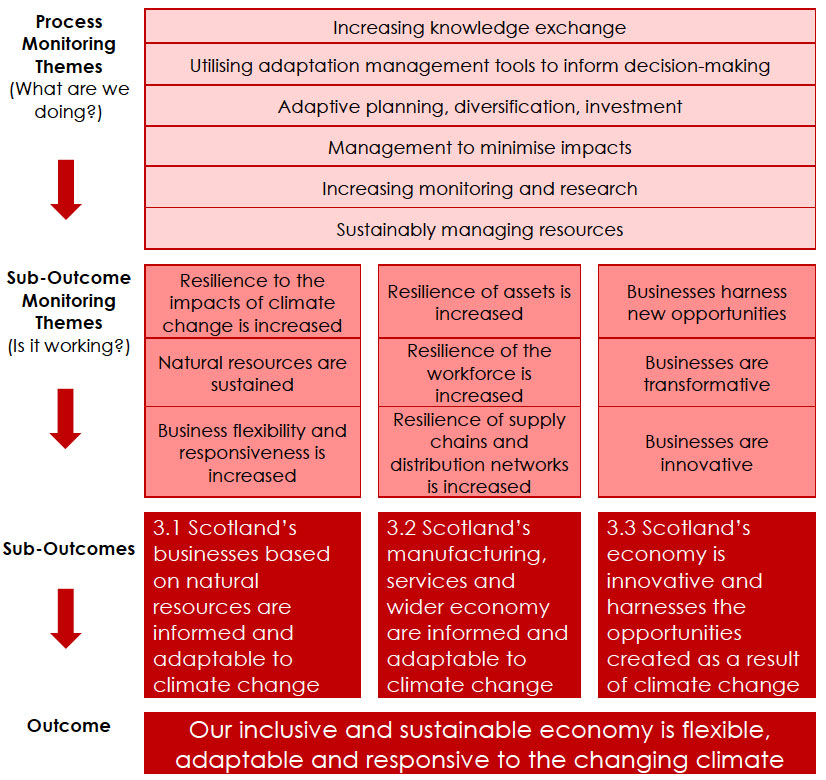
UK Climate Change Risk Assessment Associated Risks
The UK Climate Change Risk Assessment risks that will be addressed by the policies presented in Outcome 3 are set out below:
| Ne3: |
Ne6: |
Ne8: |
Ne9: |
| Ne10: |
Bu1: |
Bu2: |
Bu3: |
| Bu4: |
Bu5: |
Bu6: |
Bu7: |
Contact
Email: roddy.maclean@gov.scot
There is a problem
Thanks for your feedback